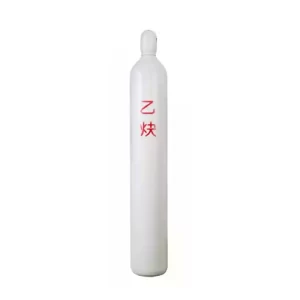Assessing the Safety of Acetylene Gas
Acetylene gas (C2H2) is a flammable and explosive gas that is used in a variety of industrial and commercial applications. It is a colorless, odorless gas with a boiling point of -84 degrees Celsius. Acetylene is highly flammable and can ignite at temperatures as low as 250 degrees Celsius. It is also explosive when mixed with air in certain concentrations.
The safety of acetylene gas is a complex issue that depends on a variety of factors, including the concentration of the gas, the storage and handling procedures, and the potential for ignition sources. In general, acetylene gas should be handled with caution and in accordance with established safety procedures.

Safety Concerns
There are a number of safety concerns associated with acetylene gas. These include:
Flammability: Acetylene gas is highly flammable and can ignite at temperatures as low as 250 degrees Celsius. This makes it important to store and handle acetylene gas in a safe manner, away from potential ignition sources.
Explosiveness: Acetylene gas is also explosive when mixed with air in certain concentrations. The explosive range of acetylene gas is between 2 and 80% by volume. This means that if acetylene gas is mixed with air in these concentrations, it can explode if ignited.
Toxicity: Acetylene gas is not considered to be toxic, but it can cause respiratory problems if inhaled in high concentrations.
Safety Procedures
To minimize the risks associated with acetylene gas, it is important to follow established safety procedures. These procedures include:
Storing acetylene gas in a safe location: Acetylene gas should be stored in a cool, dry location away from potential ignition sources. It should be stored in approved cylinders that are properly labeled and maintained.
Handling acetylene gas with caution: Acetylene gas should be handled with caution and in accordance with established safety procedures. It is important to avoid creating sparks or flames when working with acetylene gas.
Using acetylene gas in a safe manner: Acetylene gas should only be used in a safe manner, in accordance with established safety procedures. It is important to use the proper equipment and to follow the manufacturer’s instructions when using acetylene gas.
The safety of acetylene gas is a complex issue that depends on a variety of factors. By following established safety procedures, the risks associated with acetylene gas can be minimized.
Additional Information
In addition to the safety concerns listed above, there are a number of other factors that can contribute to the safety of acetylene gas. These factors include:
The quality of the acetylene gas: Acetylene gas that is contaminated with other substances, such as moisture or sulfur, can be more dangerous.
The condition of the equipment used to handle acetylene gas: Equipment that is damaged or worn can increase the risk of an accident.
The training of the personnel who handle acetylene gas: Personnel who are properly trained in the safe handling of acetylene gas are less likely to make mistakes that could lead to an accident.
By being aware of these factors and taking steps to mitigate the risks, the safety of acetylene gas can be further improved.



